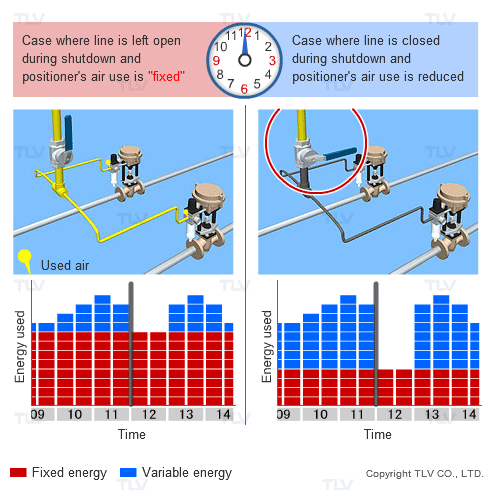- Home
- Steam Resources
- Steam Theory
- Management Strategies for Conserving Energy
Energy Efficiency
Management Strategies for Conserving Energy
More Can Be Done With Energy Use Measurements
It is often said that one does not conserve energy simply by installing a flowmeter or an energy monitoring system. However, if plant managers do not have a means of measuring their plant's energy consumption, they will not be able to even start the process of designing an energy conservation strategy. This article will examine energy use measurement, the "short cut" on the road to reducing and conserving energy in plants.
In many countries, industrial businesses are required to submit their annual energy usage to a government authority. Some plant managers start recording energy use because government regulations required them to. Commonly, however, managers start recording energy use because they want real data relative to the energy used in production. Reductions in energy go directly to site profitability.
Still, not all plants make use of valuable energy production data. The purpose of tracking energy can be plant efficiency or energy regulations/considerations, with the joint benefits of increased profitability while promoting energy conservation. If plants do not achieve energy savings, they are not operating as efficiently as possible, which could create future challenges.
Rather than simply collecting data for the sake of it, plant managers should collect energy data strategically with the goal of using this data to help optimize the performance of their steam system, and also their plant’s production.
Lowering "Fixed" Energy Usage
An effective first step in conserving energy is to divide energy use data into "fixed" energy (energy that is not affected by production volume) and "variable" energy (energy that is affected by production volume). This is an effective strategy because lowering fixed energy usage leads to overall energy savings. Particularly large amounts of energy can be conserved by employing this strategy in plants where production volumes vary significantly each day.
However, purchasing new, energy efficient appliances with low standby power usage is not the only way of reducing fixed energy consumption.
In certain cases, plant managers find opportunities for saving energy when they reexamine energy usage that they believed to be "fixed."
To fully grasp whether energy usage is fixed or not, it is important to not only measure the usage of each appliance but also to examine energy usage both when appliances are operating and when they are shut down.
Example Method of Reducing "Fixed" Energy
As an example of this method, consider compressed air lines for valves. Such lines should not use any air during shutdown, but in some cases auto-drain valves and positioners on control valves will use compressed air even when the line is shut down.
The amount of energy that each appliance uses during shutdown may be small, but the total can represent a significant amount of wasted energy. It is recommended that steam users calculate these amounts for their appliances, and turn off each appliance individually during shutdown if necessary.

In this way, proactive energy use monitoring can help users to identify potenial methods of saving energy that they had overlooked. This is why careful monitoring is a key element in managing energy use and achieving energy savings.

